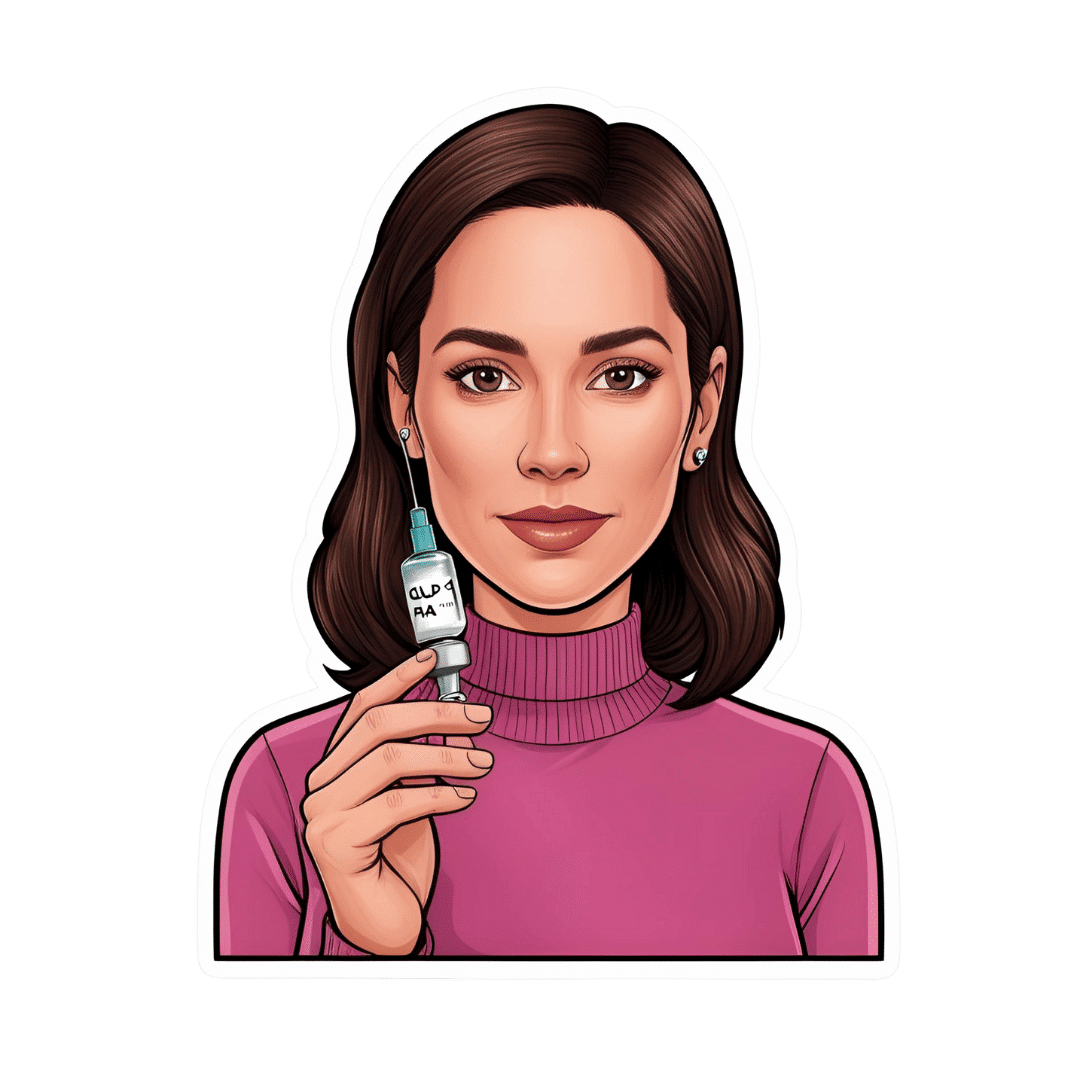
Hospitals worldwide are short of saline. We can’t just switch to other IV fluids – here’s why
10almonds is reader-supported. We may, at no cost to you, receive a portion of sales if you purchase a product through a link in this article.
Last week, the Australian Therapeutic Goods Administration added intravenous (IV) fluids to the growing list of medicines in short supply. The shortage is due to higher-than-expected demand and manufacturing issues.
Two particular IV fluids are affected: saline and compound sodium lactate (also called Hartmann’s solution). Both fluids are made with salts.
There are IV fluids that use other components, such as sugar, rather than salt. But instead of switching patients to those fluids, the government has chosen to approve salt-based solutions by other overseas brands.
So why do IV fluids contain different chemicals? And why can’t they just be interchanged when one runs low?

We can’t just inject water into a vein
Drugs are always injected into veins in a water-based solution. But we can’t do this with pure water, we need to add other chemicals. That’s because of a scientific principle called osmosis.
Osmosis occurs when water moves rapidly in and out of the cells in the blood stream, in response to changes to the concentration of chemicals dissolved in the blood plasma. Think salts, sugars, nutrients, drugs and proteins.
Too high a concentration of chemicals and protein in your blood stream leads it to being in a “hypertonic” state, which causes your blood cells to shrink. Not enough chemicals and proteins in your blood stream causes your blood cells to expand. Just the right amount is called “isotonic”.
Mixing the drug with the right amount of chemicals, via an injection or infusion, ensures the concentration inside the syringe or IV bag remains close to isotonic.

What are the different types of IV fluids?
There are a range of IV fluids available to administer drugs. The two most popular are:
- 0.9% saline, which is an isotonic solution of table salt. This is one of the IV fluids in short supply
- a 5% solution of the sugar glucose/dextrose. This fluid is not in short supply.
There are also IV fluids that combine both saline and glucose, and IV fluids that have other salts:
- Ringer’s solution is an IV fluid which has sodium, potassium and calcium salts
- Plasma-Lyte has different sodium salts, as well as magnesium
- Hartmann’s solution (compound sodium lactate) contains a range of different salts. It is generally used to treat a condition called metabolic acidosis, where patients have increased acid in their blood stream. This is in short supply.
What if you use the wrong solution?
Some drugs are only stable in specific IV fluids, for instance, only in salt-based IV fluids or only in glucose.
Putting a drug into the wrong IV fluid can potentially cause the drug to “crash out” of the solution, meaning patients won’t get the full dose.
Or it could cause the drug to decompose: not only will it not work, but it could also cause serious side effects.
An example of where a drug can be transformed into something toxic is the cancer chemotherapy drug cisplatin. When administered in saline it is safe, but administration in pure glucose can cause life-threatening damage to a patients’ kidneys.
What can hospitals use instead?
The IV fluids in short supply are saline and Hartmann’s solution. They are provided by three approved Australian suppliers: Baxter Healthcare, B.Braun and Fresenius Kabi.
The government’s solution to this is to approve multiple overseas-registered alternative saline brands, which they are allowed to do under current legislation without it going through the normal Australian quality checks and approval process. They will have received approval in their country of manufacture.
The government is taking this approach because it may not be effective or safe to formulate medicines that are meant to be in saline into different IV fluids. And we don’t have sufficient capacity to manufacture saline IV fluids here in Australia.
The Australian Society of Hospital Pharmacists provides guidance to other health staff about what drugs have to go with which IV fluids in their Australian Injectable Drugs Handbook. If there is a shortage of saline or Hartmann’s solution, and shipments of other overseas brands have not arrived, this guidance can be used to select another appropriate IV fluid.
Why don’t we make it locally?
The current shortage of IV fluids is just another example of the problems Australia faces when it is almost completely reliant on its critical medicines from overseas manufacturers.
Fortunately, we have workarounds to address the current shortage. But Australia is likely to face ongoing shortages, not only for IV fluids but for any medicines that we rely on overseas manufacturers to produce. Shortages like this put Australian lives at risk.
In the past both myself, and others, have called for the federal government to develop or back the development of medicines manufacturing in Australia. This could involve manufacturing off-patent medicines with an emphasis on those medicines most used in Australia.
Not only would this create stable, high technology jobs in Australia, it would also contribute to our economy and make us less susceptible to future global drug supply problems.
Nial Wheate, Professor and Director Academic Excellence, Macquarie University and Shoohb Alassadi, Casual academic, pharmaceutical sciences, University of Sydney
This article is republished from The Conversation under a Creative Commons license. Read the original article.
Don’t Forget…
Did you arrive here from our newsletter? Don’t forget to return to the email to continue learning!
Recommended
Learn to Age Gracefully
Join the 98k+ American women taking control of their health & aging with our 100% free (and fun!) daily emails:
-
5 Ways To Beat Afternoon Energy Slumps
10almonds is reader-supported. We may, at no cost to you, receive a portion of sales if you purchase a product through a link in this article.
This is Nisha Vora, of Rainbow Plant Life fame. After graduating from Harvard Law School, she realized she hated being a lawyer, and pivoted completely to become what she now is 12 years later, a chef and health coach.
Here are her tips for boosting energy through the day:
Caffeine timing
If you don’t do caffeine at all, no need to change that, but if you do, Vora advises that midday is the best time for it, with a very good rationale:
- of course it should not be too late in the day, because the elimination half-life of caffeine (4–8 hours to eliminate just half of the caffeine, depending on genes, call it 6 hours as an average though honestly for most people it will either be 4 or 8, not 6) is such that it can easily interfere with sleep for most people
- because caffeine is an adenosine blocker, not an adenosine inhibitor, taking caffeine in the morning means either there’s no adenosine to block, or it’ll just “save” that adenosine for later, i.e. when the caffeine is eliminated, then the adenosine will kick in, meaning that your morning sleepiness has now been deferred to the afternoon, rather than eliminated.
Another reminder that caffeine is the “payday loan” of energy. So, midday it is. No morning sleepiness to defer, and yet also not so late as to interfere with sleep.
See also: Calculate (And Enjoy) The Perfect Night’s Sleep
Simplify what can be simplified
This one’s not from a physiological basis, but rather, that a lot of the time most of us have much of our energy being taken by constant task-switching (what gets called multitasking, but as our brain is a single processor, it really means switching rapidly between different kinds of cognition, which is not efficient). In order to avoid that energy drain, try to streamline things and make a particular effort to not only single-task, but to do so without distractions.
Counterpoint: if you have unmedicated ADHD, then chances are you’ll do better with a single small distraction chosen by you, than trying to go without distractions, because your brain will find distractions anyway, so you might as well choose one (for many people it is background music, or a podcast or TV show that one doesn’t may attention to but it’s there) as a matter of harm reduction, and that way you’ll do better at focusing on your primary task than if your brain were reaching out for every and any possible distraction.
Manage your blood sugars
In particular, she advocates for avoiding sugary breakfasts, opting instead for protein, fat, and fiber-rich options. For more in this regard, see:
10 Ways To Balance Your Blood Sugars
Walk after meals
You don’t have to don hiking boots and “I am just going outside and may be some time“; rather, even a 2–5 minute walk after a meal helps regulate digestion and glucose levels, avoiding postprandial energy slumps.
So,
- if you have a treadmill, after eating is a great time to use it for a few minutes
- if you have stairs, now’s a great time to go up and down them a few times
One last technique for when everything else fails
We’ll quote her directly on this one:
❝Despite my best efforts, soemtimes I just have one of those days. Maybe I didn’t sleep well or I’m distracted by my never ending thoughts. If I need to be productive or energized on those days, I will do something that I absolutely hate:
I will take a cold shower.
And I hate it because I’m already always cold all the time, so why would I want to get a cold shower?
Well, it’s because cold water immersion has been shown to dramatically boost your dopamine levels, which gives you more energy and motivation.
In the moment though, it’s mostly painful and I hate everything and everyone around me.
But I know that if I can suffer through two minutes of a cold shower, I will feel so refreshed.❞
There are more benefits than just that, though, see:
A Cold Shower A Day Keeps The Doctor Away?
Want more from Nisha Vora?
We reviewed one of her books a while back:
The Vegan Instant Pot Cookbook – by Nisha Vora
Enjoy!
Share This Post
-
Menopause: 50 Things You Need to Know – by Dr. Felice Gersh
10almonds is reader-supported. We may, at no cost to you, receive a portion of sales if you purchase a product through a link in this article.
Can you list 50 important facts about the menopause? If not, you’ll surely find things to learn in here.
The book is divided into three main sections:
- What to expect in perimenopause
- What to expect in early menopause
- What to expect in late menopause
Each section comes with an alarming array of symptoms, ranging from perimenopause fatigue and acne to late menopause tooth loss and vaginal prolapse. This is not to say that everyone will experience everything (fortunately), but rather, that these are the things that can happen and should not arrive unexpected.
Helpfully, of course, Dr. Gersh also gives advice on how to improve your energy and skin health, as well as keep your teeth and vagina in place. And similar professional insights for the rest of the “50 things you need to know”.
The style is like one big (182 pages) patient information leaflet—thus, very clear, explaining everything, and offering reassurance where possible and also what things are reasonable cause for seeking personalized medical attention.
Bottom line: if menopause is in your future, present, or very near past, this is an excellent book for you.
Click here to check out Menopause: 50 Things You Need To Know, and know them!
Share This Post
-
Most People Who Start GLP-1 RAs Quit Them Within A Year (Here’s Why)
10almonds is reader-supported. We may, at no cost to you, receive a portion of sales if you purchase a product through a link in this article.
Specifically, 54% quit within one year, with that number rising to 72% within two years.
We first wrote about GLP-1 receptor agonists (i.e. semaglutide drugs like Ozempic and Wegovy) a couple of years ago when popularity was just beginning to take off:
However, as we had room only to touch briefly on the side effects and what happens when you stop taking it, you might also want to check out:
What happens when I stop taking a drug like Ozempic or Mounjaro?
…and:
Notwithstanding all this information, there’s a lot of science that has still yet to be done. If you’re a regular 10almonds reader, you’ll be familiar with our research review articles—this one was more of a non-research review, i.e. looking at the great absence of evidence in certain areas, and the many cases of research simply not asking the right questions, for example:
❝Of the four studies that actually looked at the macros (unlike most studies), they found that on average, protein intake decreased by 17.1%. Which is a big deal!
It’s an especially big deal, because while protein’s obviously important for everyone, it’s especially important for anyone trying to lose weight, because muscle mass is a major factor in metabolic base rate—which in turn is much important for fat loss/maintenance than exercise, when it comes to how many calories we burn by simply existing.
A reasonable hypothesis, therefore, is that one of the numerous reasons people who quit GLP-1 agonists immediately put fat back on, is because they probably lost muscle mass in amongst their weight loss, meaning that their metabolic base rate will have decreased, meaning that they end up more disposed to put on fat than before.❞
Read in full: Semaglutide’s Surprisingly Unexamined Effects ← there are a lot more (equally concerning) items discussed in this article
Why people quit GLP-1 RAs
There was a large (n=125,474) study of US adults. The average age was about 54 years, and about 65% were female.
From the total data pool (i.e. not narrowing it down by demographic), 54% stopped within a year, and 72% within two years.
The factors most associated with discontinuation were:
- age above 65 years
- not having type 2 diabetes
The main reasons given for discontinuation were:
- High costs: self-explanatory, but it’s worth noting that people who stopped for this reason were more likely to restart later.
- Adverse side effects: the most common ones were nausea, vomiting, diarrhea, constipation, stomach pain, and loss of appetite. Rarer, but more seriously, side effects included: pancreatitis (severe abdominal pain, nausea, vomiting), gallbladder issues (gallstones, cholecystitis), kidney problems, severe allergic reactions (rash, swelling, difficulty breathing), hypoglycemia, especially if taken with insulin or other diabetes medications, changes in vision (worsening diabetic retinopathy), and an increased heart rate.
- Disappointingly little weight loss: the researchers noted that GLP-1 RA results are “heterogenous”, meaning, they differ a lot. For those for whom it didn’t work, quitting was more likely, for obvious reasons. See also: 10 Mistakes To Sabotage Your Ozempic Progress
- Successful weight loss: while it is widely known that if one stops taking GLP-1 RAs, weight regain is the usual next thing to happen, there are a lot of people who go onto GLP-1 RAs with the rationale “I’ll just use this to lose the weight, and then I’ll keep the weight off with my diet and lifestyle”. Which sounds reasonable, but because of the specific mechanisms of actions of GLP-1 RAs, it simply doesn’t work that way (and, as we mentioned above, there are reasons that you may, after stopping taking GLP-1 RAs, be more disposed to put weight on than you were before you started). So, by the best of current science (which admittedly is not amazing when it comes to this topic), it does seem that taking GLP-1 RAs is a lifetime commitment.
You can read the study itself here:
Want to get similar results, without GLP-1 RAs?
Then check out:
5 Ways To Naturally Boost The “Ozempic Effect” ← this is about natural ways of doing similar hormone-hacking to what GLP-1 RAs do
and
Ozempic vs Five Natural Supplements ← this is about metabolism-tweaking supplements
and
Hack Your Hunger ← this is about appetite management
Take care!
Share This Post
Related Posts
-
Most People Try The Wrong Way To Unshrimp Their Posture (Here’s How To Do It Better)
10almonds is reader-supported. We may, at no cost to you, receive a portion of sales if you purchase a product through a link in this article.
Many people try to correct posture by pulling the shoulders back and tucking in the chin, but that doesn’t work. Happily, there is a way that does! Kinesiologist Kyle Waugh demonstrates:
Defying gravity
The trick is simple, and is about how maintaining good posture needs to be unconscious and natural, not forced. After all, who is maintaining singular focus for 16 waking hours a day?
Instead, pay attention to how the body relates to gravity without excessive muscle tension, aligning the (oft-forgotten!) hips, and maintaining balance. The importance of hip position is really not to be underestimated, since in many ways the hips are a central axis of the body just as the spine is, and the spine itself sits in the hips.
A lot of what holds the body in poor posture tends to be localized muscle tensions, so address those with stretches and relaxation exercises.
For a few quick tests and exercises to try, enjoy:
Click Here If The Embedded Video Doesn’t Load Automatically!
Want to learn more?
You might also like to read:
6 Ways To Look After Your Back ← no video on this one, just 6 concepts that you can apply to your daily life
Take care!
Don’t Forget…
Did you arrive here from our newsletter? Don’t forget to return to the email to continue learning!
Learn to Age Gracefully
Join the 98k+ American women taking control of their health & aging with our 100% free (and fun!) daily emails:
-
Common Hospital Blood Pressure Mistake (Don’t Let This Happen To You Or A Loved One)
10almonds is reader-supported. We may, at no cost to you, receive a portion of sales if you purchase a product through a link in this article.
There’s a major issue in healthcare, Dr. Suneel Dhand tells us, pertaining to the overtreatment of hypertension in hospitals. Here’s how to watch out for it and know when to question it:
Under pressure
When patients, particularly from older generations, are admitted to the hospital, their blood pressure often fluctuates due to illness, dehydration, and other factors. Despite this, they are often continued on their usual blood pressure medications, which can lead to dangerously low blood pressure.
Why does this happen? The problem arises from rigid protocols that dictate stopping blood pressure medication only if systolic pressure is below a certain threshold, often 100. However, Dr. Dhand argues that 100 is already low*, and administering medication when blood pressure is close to this can cause it to drop dangerously lower
*10almonds note: low for an adult, anyway, and especially for an older adult. To be clear: it’s not a bad thing! That is the average systolic blood pressure of a healthy teenager and it’s usually the opposite of a problem if we have that when older (indeed, this very healthy writer’s blood pressure averages 100/70, and suffice it to say, it’s been a long time since I was a teenager). But it does mean that we definitely don’t want to take medications to artificially lower it from there.
Low blood pressure from overtreatment can lead to severe consequences, requiring emergency interventions to stabilize the patient.
Dr. Dhand’s advice for patients and families is:
- Ensure medication accuracy: make sure the medical team knows the correct blood pressure medications and dosages for you or your loved one.
- Monitor vital signs: actively check blood pressure readings, especially if they are in the low 100s or even 110s, and discuss any medication concerns with the medical team.
- Watch for symptoms of low blood pressure: be alert for symptoms like dizziness or weakness, which could indicate dangerously low blood pressure.
For more on all of this, enjoy:
Click Here If The Embedded Video Doesn’t Load Automatically!
Want to learn more?
You might also like to read:
The Insider’s Guide To Making Hospital As Comfortable As Possible
Take care!
Don’t Forget…
Did you arrive here from our newsletter? Don’t forget to return to the email to continue learning!
Learn to Age Gracefully
Join the 98k+ American women taking control of their health & aging with our 100% free (and fun!) daily emails:
-
The New Menopause – by Dr. Mary Claire Haver
10almonds is reader-supported. We may, at no cost to you, receive a portion of sales if you purchase a product through a link in this article.
The author is most famous for “The Galveston Diet”, which book is astonishingly similar in its content, chapters, format, etc to Nikki Williams’ “It’s Not You, It’s Your Hormones” which came out a few years previously but didn’t get the same marketing.
Nonetheless, this time Dr. Haver has something new to add, and we think it’s worth a read.
The general theme of this book is a comprehensive overview of the menopause, experientially (subjective to the person going through it) and empirically (by science), from start to finish and beyond. This book’s more about human physiology, and less about diet than the previous.
Dr. Haver also discusses in-depth how estrogen is thought of as a sex hormone (and it is), to the point that people consider it perhaps expendable, and forget (or are simply unaware) that we have estrogen receptors throughout our bodies and estrogen is vital for maintaining many other bodily functions, including your heart, cognitive function, bone integrity, blood sugar balance, and more.
(in case you’re wondering “why don’t men fall to bits, then?”, don’t worry, their testosterone does these things for them. Testosterone is orders of magnitude less potent than estrogen, mg for mg, so they need a lot more of it, but under good conditions they produce plenty so it’s fine)
But, the amount of testosterone available to peri/postmenopausal women is simply not enough to do that job (and it’d also result in a transition of secondary sex characteristics, which for most people would be very unwanted), so, something else needs to be done.
Dr. Haver also discusses in detail the benefits and risks of HRT and how to get/manage them, respectively, with the latest up-to-date research (at time of going to print; the book was published in April 2024).
Bottom line: if you want to know what’s going on with your peri- or post-menopausal body and how it could be better (or if you want to know what’s going on with someone else approaching/experiencing menopause), then this is a top-tier book.
Click here to check out The New Menopause, and know what’s going on and what to do about it!
Don’t Forget…
Did you arrive here from our newsletter? Don’t forget to return to the email to continue learning!
Learn to Age Gracefully
Join the 98k+ American women taking control of their health & aging with our 100% free (and fun!) daily emails:








